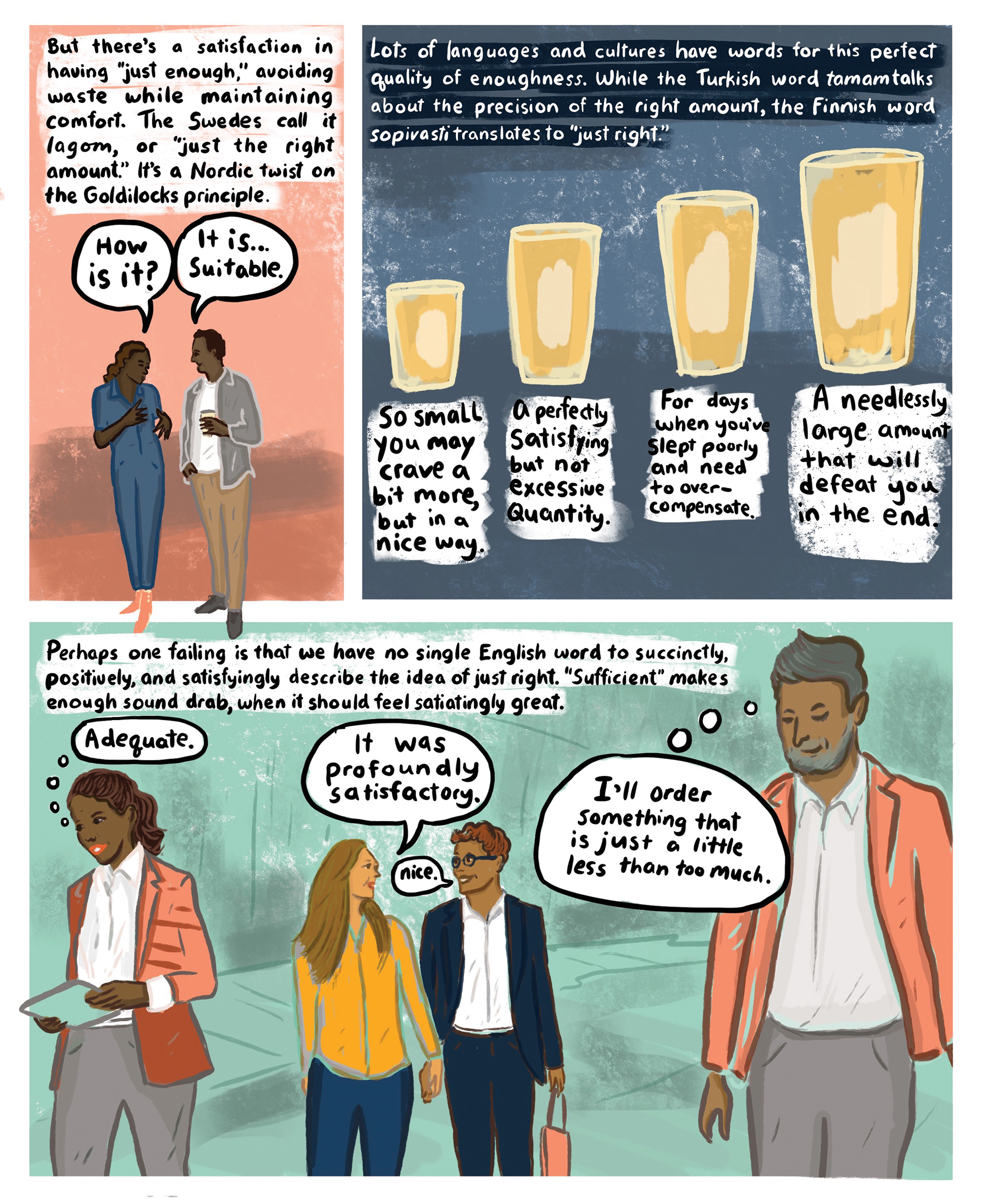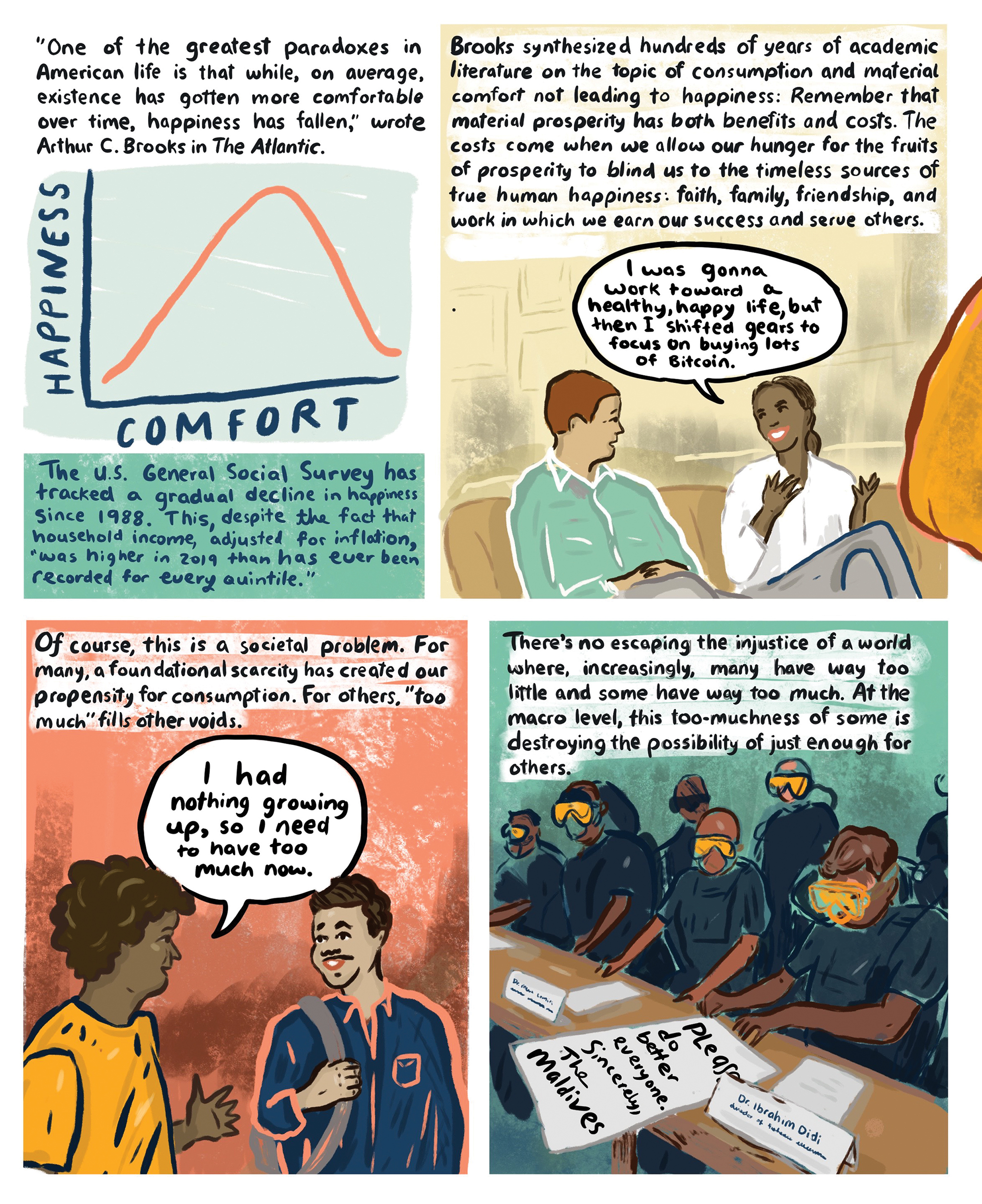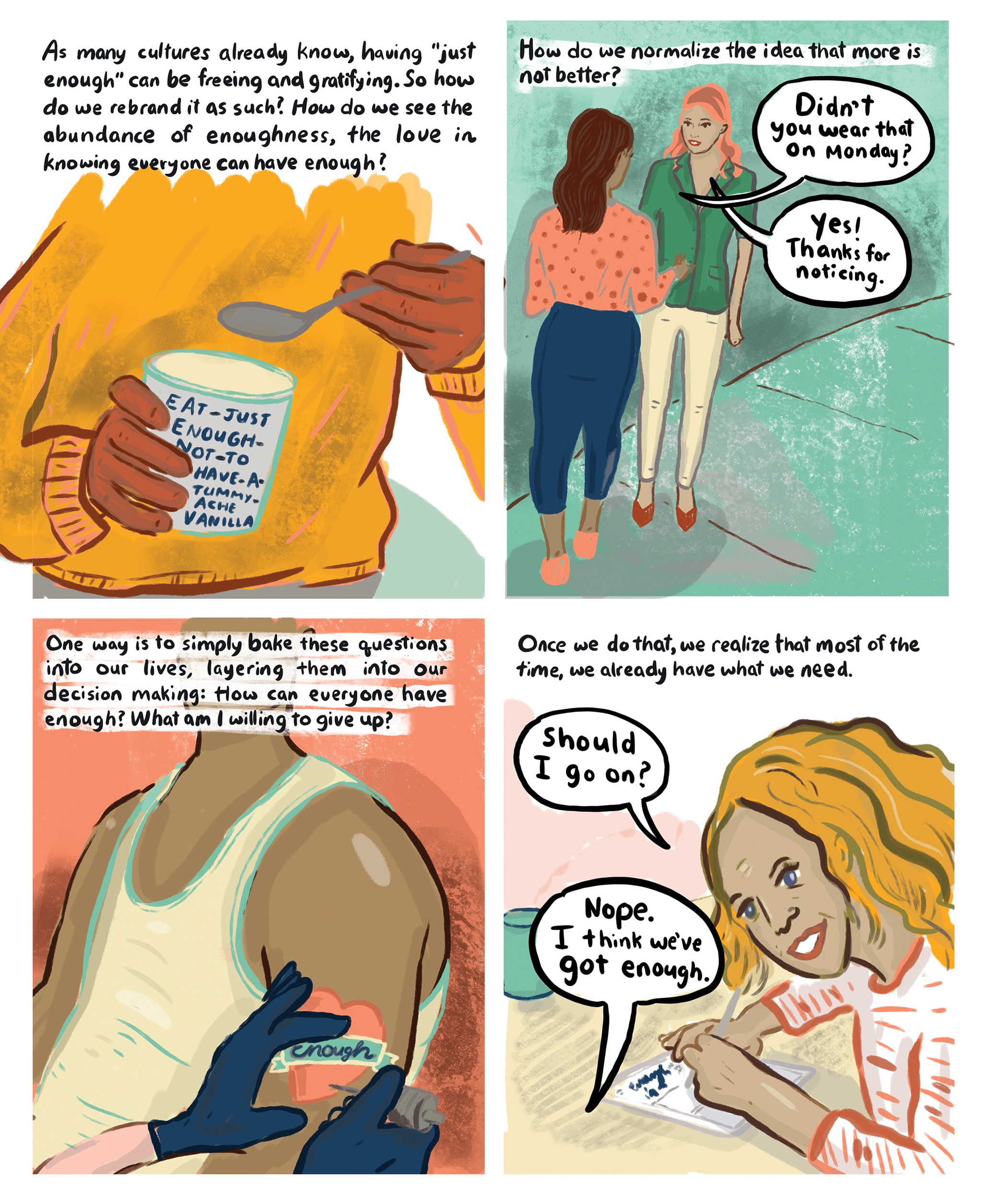46 Enough Is Enough
Learning Outcomes
- Apply the reading process to Enough is Enough.”
- Summarize the comic.
- Respond to the comic.
- Apply the comic form to present an argument about a current issue.
Preview the Comic
Follow the steps below to preview the comic “Enough is Enough.” Ideally, you should print the comic and write your responses in the margins of the printed copy. To read more about previewing, visit the chapter on previewing a reading.
- Read the title and subtitle. What does it make you think about? What do you think the comic is about? What questions do you have? Record your predictions and questions on the printed copy of the comic next to the title.
- Each separate illustration within the comic is called a panel. Read and view the first panel and the last panel. What additional predictions do you now have about the comic? What additional questions do you have? Record them on the printed copy of the comic.
- Based on your preview of the comic, what do you think is the central point? (Don’t worry if you are not sure. This is a prediction or guess – you do not have to be correct as long as you are engaging your brain.) Record your prediction on the printed copy of the comic.
- What could be the purpose of the comic? Why did the artist create it? Make a prediction and record it.
Read Interactively
Now, read the comic more closely using the guidelines from the chapter on reading interactively. As you read, follow these steps to engage with the text.
- Pause to confirm or revise your predictions and to answer the questions you posed while previewing the comic. Write down those revised predictions and responses to the questions as you read. If you cannot find the answers to your questions, save them for further research and discussion.
- Pause to check for understanding of the comic. Can you explain the ideas in your own words yet? If not, examine the panels more closely.
- Pay attention to any vocabulary words that are confusing. Look up the words in a dictionary if they are interfering with your understanding, or mark them to return to later.
- Record any opinions or reactions you have to the reading.
- Write down any further questions that develop as you read.
Enough Is Enough
August 10, 2021




This comic was originally published by YES! Media and is reprinted here with permission. Read the original publication.
Sarah Lazarovic is an award-winning artist, creative director, freelance animator and filmmaker, and journalist, covering news and cultural events in comic form. She is the author of A Bunch of Pretty Things I Did Not Buy.
Reflect
After reading, reflect on the comic and your reading process. See the chapter about reflecting for a discussion of why this is a crucial step.
- Try to paraphrase the main idea in a sentence. This may be challenging. If you are struggling, do your best. You can refine this when you examine the comic more closely to summarize it.
- Is the comic primarily narrative, expository, or argumentative? What is the purpose of the comic? In other words, why do you think the author created it?
- Which predictions were accurate, and which ones did you revise as you read?
- As you previewed the comic, you wrote questions. Which questions remain unanswered?
- What else do you want to know about the topic? Write down any additional questions.
- How did previewing the comic help you to understand and engage with the text?
- Where did you struggle to understand something in the text, and how did you work through it?
- How was this reading experience different from reading an article?
Summarize
Complete a summary of the comic by following these steps. Make sure you have read the chapters about Reading to Summarize before proceeding with the summary.
- Reread the comic and complete the Summary Notes. If this were an article, you would group paragraphs together as you determine the major points. Since the text is a comic, decide which panels of the comic work together to communicate a major point, and group them together. See Preparing to Summarize for a review of this topic and an example.
- Then, use your Summary Notes to write a one-paragraph summary of the comic. See Writing a Summary for a review of this topic and an example. Make sure that you include in-text citations and the Work Cited. For in-text citations, rather than including paragraph numbers, you should refer to the panel number in your sentence (e.g. “In panels five through eight,…” or “In the last three panels of the comic,…”).
- Use the self-assessment/peer review questions from Evaluating a Summary to self-assess your summary or invite a peer to provide feedback.
- Use the self-assessment or peer feedback to make changes to your summary.
Make sure you are comfortable with your summary before advancing to the response. If you misunderstand something in the comic, then your response may be skewed based on that misunderstanding.
Respond
Write a response to the article by following these steps. Make sure you have read the chapters about Reading to Respond before proceeding with the summary.
- Use the Response Questions from Preparing to Respond to brainstorm possible ideas for your response. See the example in that same chapter.
- Read over your replies to the Response Questions. Choose one idea to write about in your response. Express that idea in a topic sentence. See Writing a Topic Sentence for a Response for examples. Ask a peer for feedback on your topic sentence.
- Brainstorm about possible support you could use in your response. See Generating Support for a Response for examples.
- Use your topic sentence and ideas from the list of support to write a one-paragraph response. See Writing a Response writing guidelines and examples. Make sure that you include the Work Cited and in-text citations for any quotes or specific ideas from the comic. For in-text citations, rather than including paragraph numbers, you should refer to the panel number in your sentence (e.g. “In panels five through eight,…” or “In the last three panels of the comic,…”).
- Use the self-assessment/peer review questions from Evaluating a Response to evaluate your response or have a peer provide feedback.
- Use the self-assessment or peer feedback to make improvements to your response.
Extend: Apply
Sarah Lazarovic presents her work in comic form. If you were to choose a current issue to make a point or argument through a comic, what would it be? Why do you think a comic would be an effective way to address the issue?
Plan the design of the comic. How would you organize the comic using captions (the narration in each panel), speech bubbles for character dialog, and illustrations? You do not need to actually draw the comic (although you may). Indicate what you would include in each panel if you were to actually create the comic.

